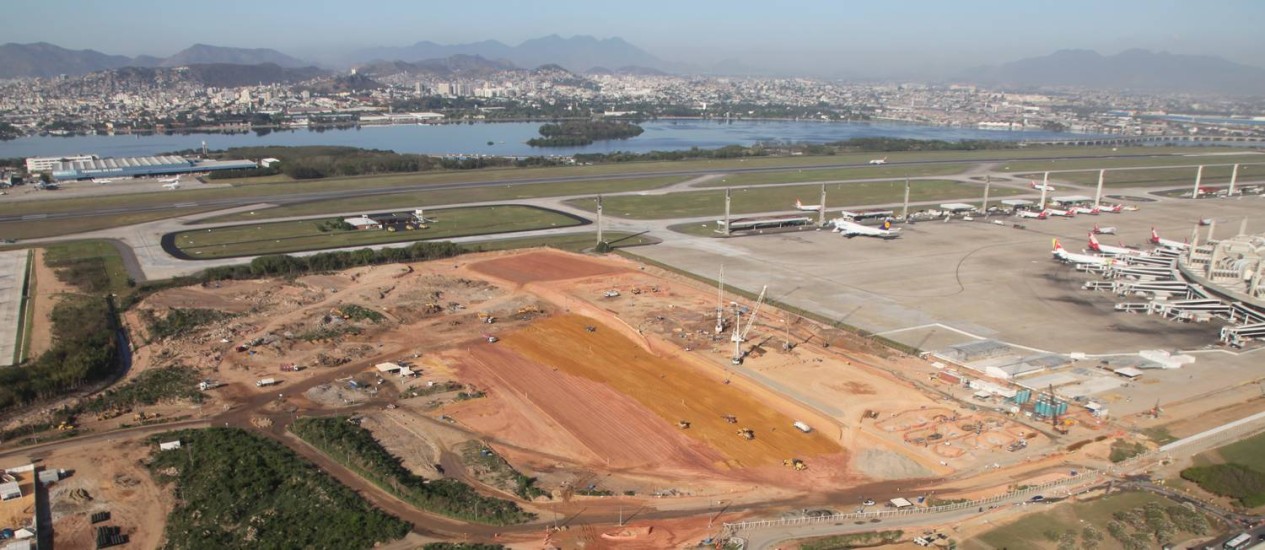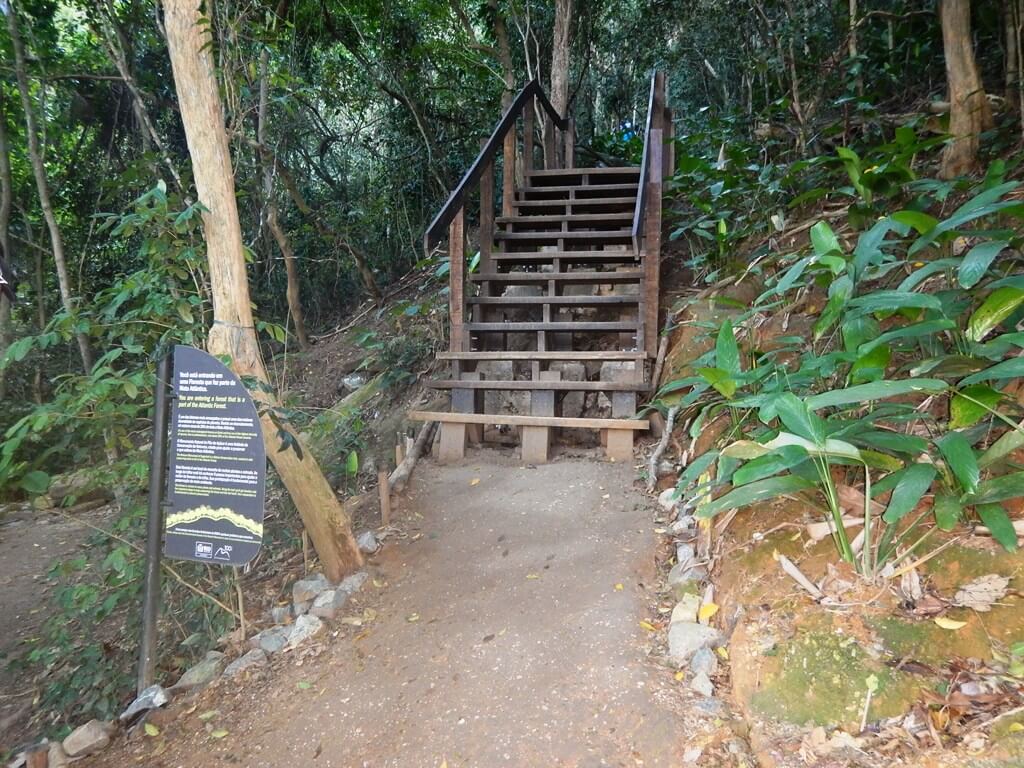Rio de Janeiro | First time in Brazil: Welcome to Rio de Janeiro
For a long time, I had been interested in visiting Brazil for various reasons. I even took a course in Portuguese to better familiarize myself with the language before traveling there. This rewarding experience only solidified my desire to visit the country. That day finally came, and my first destination was the renowned city of Rio de Janeiro. My trip began with a flight from the north of Brazil to the south, which meant crossing almost the entirety of the country by air. This is no small feat, as Brazil occupies a significant portion of a continent. Due to its size, the airplane flew at a high altitude, making it difficult to see details on the ground. The few blurry glimpses I caught were patches of endless green—no doubt signs of the Amazon rainforest or similar landscapes.

I was able to see traces of the Amazon from the air.
However, this was only at the start of my journey. As we flew further south, it became clear that the climate and terrain were different. This difference was particularly noticeable as we approached Rio de Janeiro; the cloud formations looked distinct, resembling those you might see in winter. This made sense, as I was traveling to the southern hemisphere in the middle of July, which is winter in that part of the world. Once we descended to a lower altitude near the city, the landscape revealed itself as mountainous—hilly and significantly less lush than the northern regions. It even felt a bit chilly.
Views from the airplane.
Upon landing, it was time to clear customs and immigration. Once we finally landed, it was time to clear customs and immigration. I wasn’t sure how that would transpire because certain countries have very nasty immigration policies and welcome people like they’re criminals. However, this was not the case in Brazil. I was pleasantly surprised by the carefree and welcoming atmosphere, especially as a tourist. The immigration officers were calm and genuinely seemed happy to see visitors; they felt welcoming. This was a relief and gave me a great first impression of the country. Once we cleared immigration, we entered a surprisingly large airport, as one would expect from such a world-renowned city. The airport felt comparable in size to the one in Houston, Texas—perhaps a bit smaller, but still impressive. After a few long walks, we finally reached the exit and stepped out onto the ground level.

The airport appeared to be built on an artificial island.
Once we were officially in Brazil, a taxi driver greeted us and began speaking to us in Spanish, likely due to the flight we had arrived on. I thought, “Well, there goes any concerns about a language barrier.” He was very nice and helpful in orienting us about the city. We took a cab driven by him to the hostel we had identified beforehand, enjoying the ride from the airport to downtown Rio. As we got onto the highway, it became clear that the airport was built on an artificial island. From the highway, which was quite wide, we could see the outline of the city nestled in a large bay. It was a cloudy day, giving the city a grounded, earthy feel—very different from the sunny, overly marketed views often associated with Rio. I appreciated this difference, as it made the city feel more authentic.

A bridge connected the airport to the rest of the city.
Once we reached the city center, it took only a quick detour off the highway to arrive at our hostel. Now it was time to test my Portuguese skills. Up until then, I had been speaking Spanish, and I was curious to see if what I had learned in Portuguese would prove useful. At the hostel, I had to book a room for myself, and it was somewhat challenging at first. I got confused when the staff member kept mentioning something called “PIX.” I had no idea what this meant and couldn’t recall any Portuguese word that matched it. It was only later that I learned it referred to a mobile payment system. Since I had never been to Brazil, I didn’t have it set up. After some clarification, I was able to pay with my debit card.
Learn more about the phone payment method in Brazil: PIX
Rio looked calm and earthy at ground level.
Despite my initial nervousness, I eventually managed to pay for our rooms. We then asked, “How do we get to some of the more iconic attractions in the city?” One of the guests at the hostel kindly offered to help us. He said, “Don’t worry, I can find you a taxi to take you to the beach. Here’s where you need to go, and here’s the location on GPS. Just make it over there, and when you come back, you can pay me for the taxi. No worries!” I was taken aback by this act of kindness toward a foreigner struggling with the language. It left me with a wonderful impression of the country. The man used his phone to request what was essentially an Uber, and within moments, we were off to the beach. We were heading to a place called Morro da Urca, a peculiar geological formation shaped like an egg, an egg-shaped mountain next to the beach.

The small beach next to the egg-shaped mountain.
See: Morro da Urca - Travel guide in Portuguese
On the way there, it was great to take in the city as we passed through its more urban parts rather than the highways. The vibe was laid-back and dense, yet not overly crowded. There was some traffic, but nothing excessive. We passed by the beach along one of the smaller avenues, overlooking small yachts and boats, which looked lovely. We were definitely near a large harbor, but it felt very calm and cozy—far from industrial. Once we got close to the mountain, the cab dropped us off next to a large park, with what appeared to be a large government building nearby. Close to this building was the entrance to a cable car that would take visitors to the top of the egg-shaped mountain. We chose not to go there, feeling it might be a tourist trap, and instead continued to the beach. The beach was serene and calm. Despite being in a large, tourist-oriented city, it felt peaceful, with people simply enjoying their day. It gave me the impression of being in a live-and-let-live environment, which I really appreciated.

There was a lift to the top of the mountain.
Next to the beach, we found an entrance to a trail that led up the mountain. It wasn’t immediately obvious that the trail was there, but thankfully some signposts guided the way. The walk was pleasant, offering scenic views of the beach, and the climate was mild—not too hot, just right.

One could walk up the mountain via a small trail.
On the way up, we encountered a signpost indicating that monkeys were in the area. Sure enough, we found a crowd of people watching small monkeys, about the size of a person’s forearm, scampering around. According to the signs, we were advised not to feed them, as they could become aggressive. It was fascinating to observe how they carefully manipulated objects with their human-like hands.

Small monkeys can be seen walking up the trail.
As we continued our ascent, we were mostly sheltered by foliage, walking among the trees. Once we reached the top, we arrived at a large installation that received gondola cars from the base at the beach. This area was much more tourist-oriented and was filled with shops. It offered a scenic view of the city from the top of the hill. Despite the beauty of the scenery, it felt senene and calm. Chill would the feeling. I loved it.

One could see part of the city's bay atop the Morro.
After taking in the views of the city and realizing it wasn’t as large as it appeared from the airport, I took a while to let it sink it. Looking out at the city in contemplation, as the sun was going down, I thought to myself, this is a country that is often besmirched with accusations about its supposed insecurity and lacking infrastructure. Yet what I saw there was nothing like this. I saw something beautiful and calming and reassuring. I saw boats floating atop a peaceful bay as if candle lit and amongst dozens and dozens of towers all cradled amongst smooth, rolling mountains. How could any of this be besmirched?

Fantastic view of the small bay
We made our way back down the trail to the beach and caught a cab back to the hostel. Once there, we wanted to prepare some food, so we headed to a nearby supermarket. I was pleasantly surprised to see that my travel companion tried to speak Spanish with the staff, and they responded with patience and helpfulness despite the mild language barrier. It was heartwarming to witness their tolerance and kindness. I quietly smiled as as I thought to myself “what good peaple these are”. With a reassured heart, we went back to the hostel and paid the kind man who called us a cab.
In the small kitchen of the hostel, we met an assistant from Uruguay. She shared her insights about the dynamics in Brazil during our lengthy conversation. According to her, while Brazil is a lovely country for tourists, living and working there presents a different challenge. Unlike in Uruguay, where long-term contracts are common, Brazil often relies on short-term contracts. This means that even if someone works at the same establishment for over a year, they are frequently let go without a contract renewal to avoid the costs associated with long-term employees. As a result, while one can find employment relatively quickly, job security is limited. Her analysis suggests that many available jobs in Brazil are unskilled, with easily replaceable workers, rather than positions that value trained employees. We might condense her observations through the popular meme that “all engineers become uber drivers in Brazil”. After this long and enlightening conversation, we headed to our room and called it a night following a nice meal.







